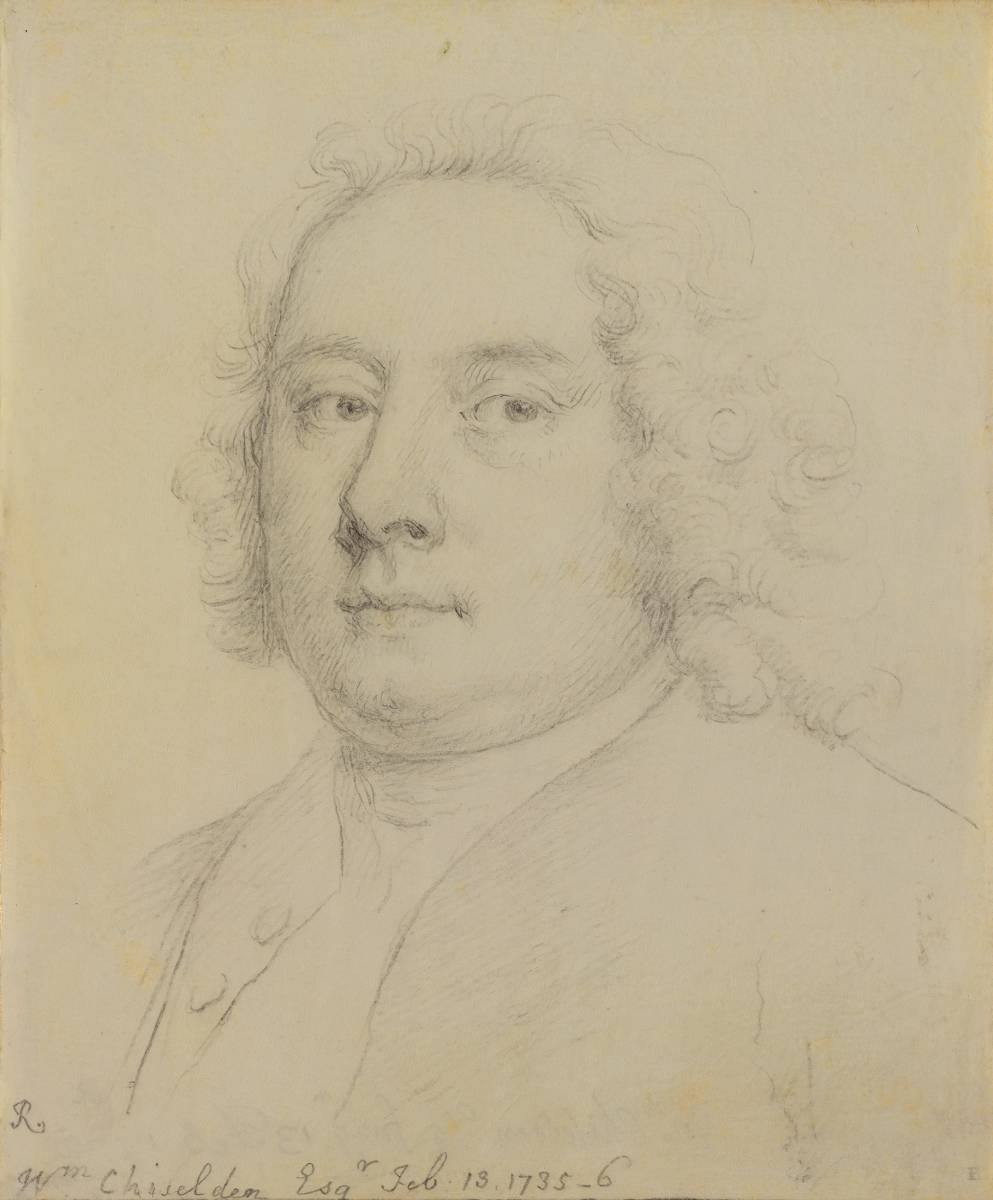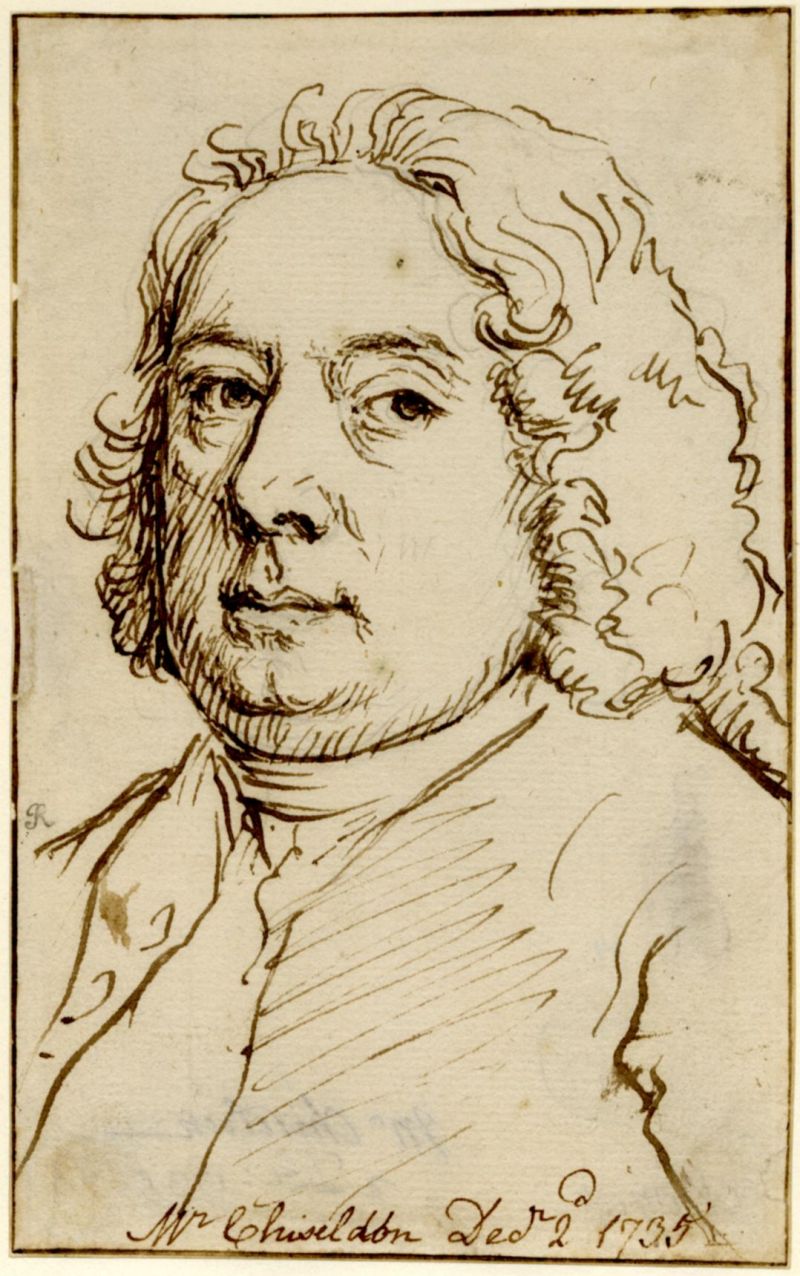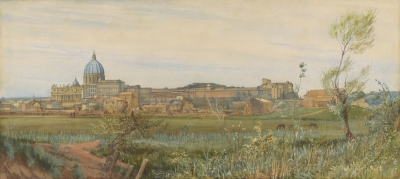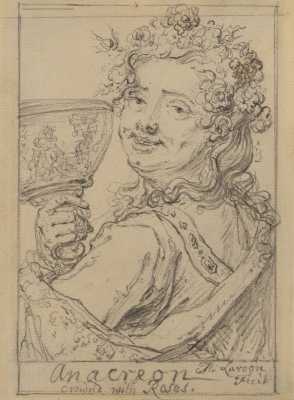This drawing depicts the leading surgeon and anatomist, William Cheselden and was made by his close friend, the painter Jonathan Richardson. Worked in graphite on vellum, the drawing is carefully inscribed with the date, 13th February 1736 and belongs to a sequence of intimate ‘plumbago’ drawings Richardson made of friends, relations and celebrated historical figures during the 1730s. Cheselden was acknowledged to be one of the leading surgeons of Europe in his lifetime and was renowned as a pioneer of both lithotomy and ophthalmic surgery. Richardon and Cheselden were evidently close, and Richardson made several drawings of his friend; these include an ambitious chalk portrait on blue paper as well as study in pen and ink dated 2nd December 1735, both now in the British Museum, London.
Cheselden was trained in London with the surgeon James Ferne and may have additionally studied under William Cowper. He rose to prominence thanks to a series of innovative publications, including The Anatomy of the Human Body (1713), a student’s manual with plates, basic physiology, and operative surgery. It proved extremely popular, eventually running to thirteen London editions. Cheselden was much in demand as both a lecturer and demonstrator of anatomy and he conceived an ambitious three volume study of comparative anatomy. In the event only one volume was published, Osteographia, or, the Anatomy of the Bones which was published in 1733. This magnificent folio work demonstrates Cheselden’s innovative planning, artistic skill and unwavering insistence on anatomical accuracy. Cheselden evidently values his own abilities as a draughtsman. The title-page shows a self-portrait using a camera obscura to draw a skeleton with the help of his apprentices Samuel Sharp and John Belchier. Whilst the plates were designed by professional artists, the preface makes clear that Cheselden was intimately involved in their conception and execution. We know that Cheselden formed a professional relationship with the artist Louis Chéron and John Vanderbank who ran the first St Martin’s Lane Academy. He seems to have taught anatomy to artists who attended the academy and, in turn, learnt to draw from the model.[1]
This characteristic drawing by Richardson, drawn in sharpened graphite with speed and precision shows the solidly proportioned Cheselden looking to the left. Richardson’s most incisive portraits have the quality of having been made whilst in informal conversation with the sitter, giving them an unusually animated and informal quality. Richardson had retired from his busy portrait practice by the time he made this study, he embarked on a remarkable cycle of self-portraits. As Horace Walpole observed of Richardson after his death: ‘after his retirement from business, the good old man seems to have amused himself with writing a short poem, and drawing his own or son’s portrait every day.’ Richardson’s source material was a little broader and encompassed many of his closest friends and associates, including Cheselden, who he drew and painted on a number of occasions. The present drawing is a particularly fine example and points to the integration of the medical and artistic worlds in Augustan Britain, a moment when artists and scientists were both engaged in the process of empirically recording the world.
This drawing was in Richardson’s collection at his death, when it was stamped with his distinctive collector’s mark, passing to his son. It is next recorded in the collection of Dr Edward Biggall who owned a number of drawings that had belonged to Dr Richard Bull (1725-1805). It was subsequently owned by three of the most important collectors of early British drawings: Herbert Horne, Edward Marsh and Walter Brandt, it is on the market for the first time since 1961.



